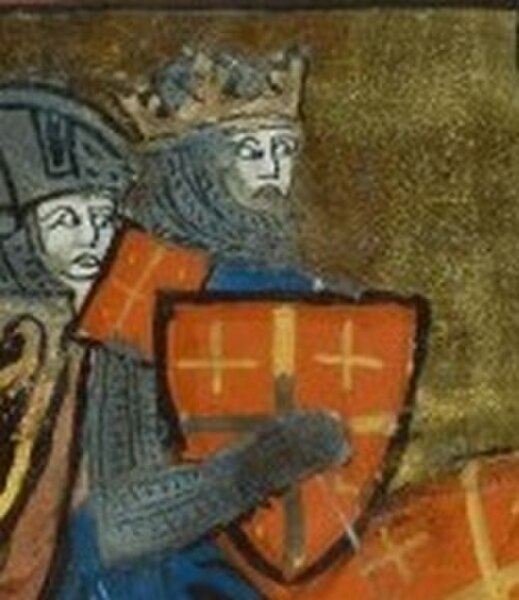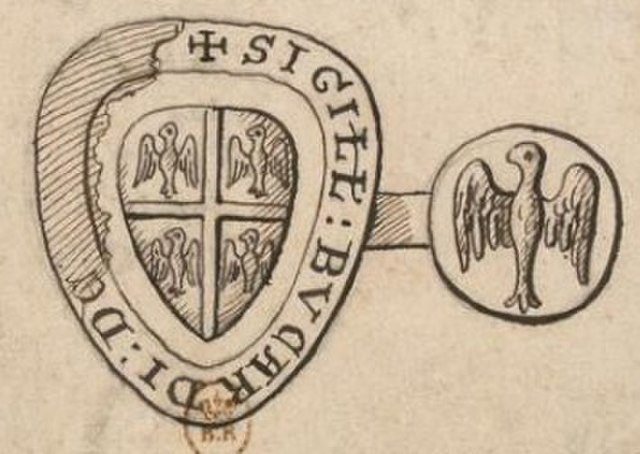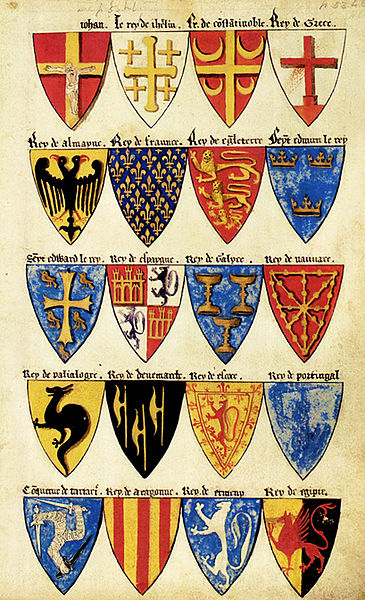The Jerusalem cross is a heraldic cross and Christian cross variant consisting of a large cross potent surrounded by four smaller Greek crosses, one in each quadrant. Heavily popularized in the crusades, it was used as the emblem and coat of arms of the Kingdom of Jerusalem from the 1280s. It still continues to be used by Anglicans, Episcopalians, and conservative Catholics today.
Jerusalem cross on a silver coin of James II of Cyprus (1463–1473)
Depiction of the Jerusalem cross on a red (rather than silver) shield as the arms of Godfrey of Bouillon in a 14th-century miniature.
Godfrey of Bouillon as depicted in a late medieval fresco
A number of cross symbols were developed for the purpose of the emerging system of heraldry, which appeared in Western Europe in about 1200. This tradition is partly in the use of the Christian cross an emblem from the 11th century, and increasingly during the age of the Crusades. Many cross variants were developed in the classical tradition of heraldry during the late medieval and early modern periods. Heraldic crosses are inherited in modern iconographic traditions and are used in numerous national flags.
9th-century Byzantine seal showing a patriarchal cross (seal of Niketas, commander of the Byzantine imperial fleet)
Seal of Bouchard de Marly (attested 1225), a cross, quarterly four alerions
Seal of Amadeus V, Count of Savoy (1249–1323), showing a knight on horseback displaying the Savoy cross on his shield, ailets (shoulder-pads) and caparison (horse covering)
A section of Segar's Roll, a 17th-century copy of a late 13th-century English roll of arms. Crosses are shown on the arms of: the legendary Prester John (attributed arms showing a full crucifix including the figure of Christ), the King of Jerusalem (the Jerusalem cross), the Emperor of Constantinople (the Palaiologos dynasty emblem with the Betas interpreted as crescents), the "King of Greece", and King Edward the Confessor of England (attributed arms showing a cross and five martlets).







